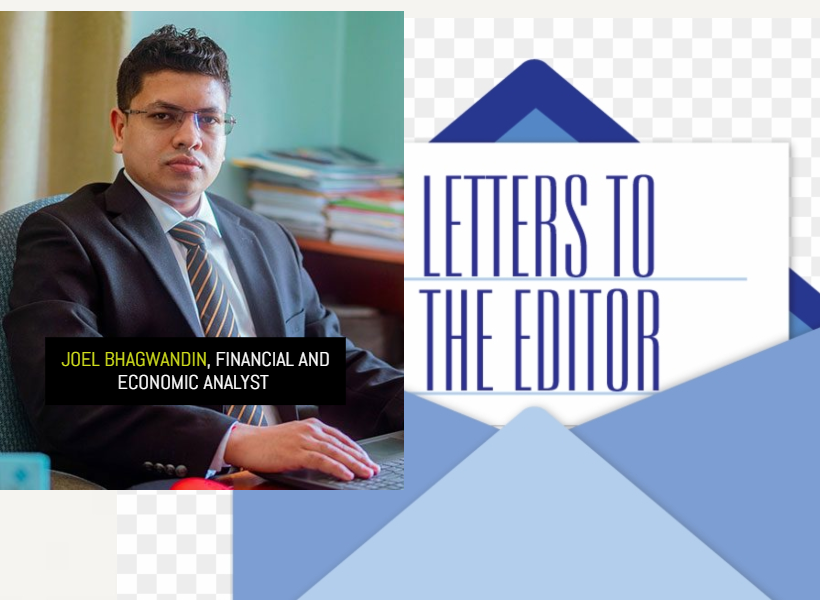Dear Editor,
Reference is made to Elson Low’s letter in the Stabroek News edition of July 10, 2023, with the caption, “UG’s debate audience seemed to readily accept that Guyana cannot continue to not be a real place”. He was referring to a debate between myself and him organized by the student’s society and economics students of the University of Guyana, held on July 5th, 2023, and which was live streamed on social media.
In typical APNU/PNC style, my opponent declared self-victory in the same manner his political party declared victory at the 2020 General and Regional elections and more recently, the Local Government Elections. By his own admission, his declaration of victory is based on mixed reactions from the audience who were present to witness the debate. Indeed, let me acknowledge that my opponent was louder, more entertaining (dramatic), and he made good use of the emotive technique to captivate the audience, as opposed to presenting cogent, coherent, and compelling academic / intellectual arguments.
Now, if this is what my opponent relies on to declare himself the winner (from mixed reactions), I must point out that he did not report accurately on the full reaction, particularly, the post-reaction of the audience. As I pointed out in my column on Sunday, one would expect that given the moot; my opponent would have presented a blueprint of an alternative development path―which he failed to do. His argument was deeply incoherent and lacked substance, such that even a third form secondary school student by the name of Reginald Brown from St Stanislaus College, recognized the weakness of Low’s arguments. The student posed the following (brilliant) question to him (Low) during the floor debate segment: “What would be an alternative development path you’d propose and what sectors would you prioritize?”
In response to the student’s question, Elson Low visibly fumbled and exhibited nervousness. But to appear smart, he rambled and bluffed his way stating that “there should be no poverty, that we need to model a vast amount of scenarios, he thinks tourism has some potential, and manufacturing…” And he rambled on for about three minutes and could not have answered the question. At minimum, it was expected of him to use the opportunity to expand on the Opposition Leader’s ten points plan he presented in the National Assembly in his budget 2023 debate, as his substantive arguments. Disappointingly, he did not.
Another important reaction from the audience was that at the end of the debate, a number of students were in line waiting for their turn for a handshake and to engage in further discussions with me based on my substantive presentation. My opponent, on the other hand, was nowhere to be seen capturing this kind of attention after the debate. None of the students appeared to be interested in any post discussion with him. I was the last to leave the room and this can be verified by looking at the pictures of the event on social media.
My opponent’s main argument that dominated his presentation was on poverty―referencing an old report that states Guyana’s poverty level is 43%. When I pointed out that according to the latest labour force report by the Bureau of Statistics (2021-Q3), that Guyana’s labour force participation rate of 49% is among the lowest in the world, my opponent questioned the credibility of the report. Effectively, I sought to illustrate the correlation between the non-participation of half of the working age population in the labour force―to the perceived level of poverty. This means that 51% of the working age population are not interested in being part of the labour force for whatever reason. From this data, it is reasonable to extrapolate that in half of the total number of households (approximately 250,000), one person is the bread winner (average number of persons per household is three) per household despite having at least two persons per household of working age. Conversely, less than half of the total households, at least two persons are generating household income.
The global average labour force participation rate is about 60%. Notably, low-income countries’ participation rate averaged 70% according to a recent study by the International Labour Organization (ILO). This explains why countries such as Canada, the United States of America and Singapore were built by immigrants. The country with the highest labour force participation rate in the world (historically) is China with a rate of 80% in the 1980s which is now down to 70%.
It is for this reason that the Government of Guyana, in confronting the skills shortage in the labour market, is seeking to integrate more women into the labour force. Thus, the labour market constraints that the country is currently experiencing is not on account of a shortage of human resources, per se, it is on account of a shortage of skills coupled with the lowest labour force participation rate.
Moreover, my opponent failed to recognize that the level of poverty in Guyana was much higher, almost 100% when his political party was in government in the pre-1992 era that pushed the country into bankruptcy. And those very policies he and his political party continues to advocate, are the very policies that are not sustainable―and that will push the economy into bankruptcy, if implemented, once again. With this in mind, the fact is that under the stewardship of the current government, extreme poverty has been eradicated and more than half of the population lifted out of poverty over the last three decades.
In my presentation, I argued that Guyana’s development path is a journey that began three decades ago under the current government, and that development is not an overnight process. In so doing, I highlighted Guyana’s economic history, how the economy evolved, and some of the key developmental challenges and needs. In this regard, reference was made to the 1996 National Development Strategy (NDS), which was not prepared by a United Nations intern, but, over 200 Guyanese stakeholders, including the political opposition.
Guyana was once a centrally command State where more than 80% of the productive sectors were controlled by the State. In the post 1992 era, Guyana transitioned from a centrally command and bankrupt State to a mixed- economic system with more predominant features of a free market economy. Guyana’s debt-to-GDP stood at over 900% at one point in time. During this period, Guyana recorded the highest inflation rate of 89.7% in 1989, the highest interest rate (prime lending rate for the period) of 37.5% in 1989, negative growth rates were recorded in 1988-1990, the exchange rate devalued from G$4.25/US$1 in 1985 to G$27/US$1 in 1989, G$112/US$ in 1990, G$138/US$1 in 1994, G$178/US$1 in 1999, G$200/US$1 by 2004.
Despite all of the inherent development challenges which I pointed out, by 2014, Guyana achieved macroeconomic stability from a bankrupt State in 1992 with the following macroeconomic outcomes:
❖ Real GDP stood at US$4B from US$200M,
❖ Per capita income moved to US$5,000 from less than US$300,
❖ Net International Reserve stood at US$652M from US$15M,
❖ Exchange rate stabled at G$208.5/US$1,
❖ Prime lending rate (weighted average) down to 11% from 37.5%,
❖ Debt-to-GDP Ratio down to 40% from a high of 900%,
❖ GDP growth rate of 4%, and
❖ Inflation rate 1.2% down from 89.7%.
Guyana is projected to experience sustained double-digit growth over the next decade with continued oil production and exploration. The Government is pursuing an expansive economic diversification and transformative development agenda. The medium-term focus areas are investment in public infrastructure sector, agriculture /Agro-business/Agro-processing, transforming the energy landscape with cheaper and reliable energy supply. Other key focus areas include education, health and digitizing the IT infrastructure of the public sector to aid improved efficiency in delivering public service.
More importantly to note, is that the projected earnings from the oil and gas resources is modest when juxtaposed with the massive development needs of the country, and the need for climate resilient development within the Low Carbon Development framework. It is important to note that macroeconomic stability, high investors’ confidence―and from a global perspective, perceived low-to-moderate political risk―are the hallmarks to achieving the transformational development that the government is advancing.
Unfortunately, my opponent demonstrated the shallowness of his and by extension his political party’s thinking where public policy administration and economic stewardship of the country is concerned. Especially given the portfolio he holds as Economic Advisor to the Leader of the Opposition and considering that the Leader of the Opposition has no formal training in economics or finance.
(In a separate article, I will expand on how the current development agenda will aid in poverty reduction/alleviation).
Yours respectfully,
Joel Bhagwandin











